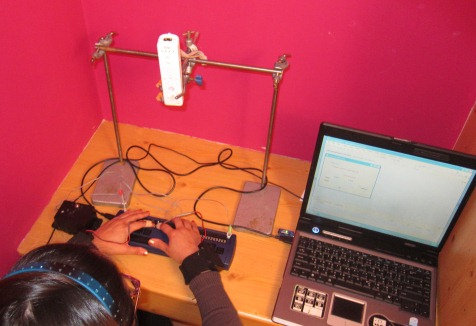Visions with video games

Gaming technology is being used at the MARCS Institute to find out how blind people read braille. By using the infrared cameras of Nintendo’s Wii remote controls, Visiting Professor Ronan Reilly and a team of scientists at UWS are looking for ways to make reading braille easier for blind people. As a result of their research, they have found some evidence that very fast readers use the part of the brain used for hearing.
Thanks to infrared camera technology, high-resolution pictures have been created that are helping the scientists to understand the reading process in more depth. In the future, the images will help the scientists to discover ways to improve how braille is taught to the blind.
As part of the study, participants were asked to read a mix of short and long essays as well as single sentences. This was followed by a quiz about what had been read. “Our aim is to study braille-reading in as natural a context as possible so we can get an accurate picture of the various strategies that readers adopt,” explains Professor Reilly. So far, 20 Australian and 20 Irish readers have undertaken the experiment.
The research has shown that there’s a link between the parts of the brain that control the hand and those that understand language. “Because of the precision of our tracking system, we have been able to see quite subtle adjustments in readers’ hand speeds as they pass through words,” says Professor Reilly. “For example, fast readers slow down imperceptibly — by around one-twentieth of a second — when passing through a word that doesn’t occur frequently in the language.”
One of the main focuses of the research is to discover an easy way for people who have lost their sight later in life to learn braille. Another is to come up with a teaching aid to help young readers in mainstream schools who have limited braille teaching support.
The scientists are learning much about the brain while conducting this research. “The challenges met and overcome by readers of braille in mastering their writing system tell us a lot about the plasticity and adaptability of the human brain,” says Professor Reilly. “We already know from brain scans, for example, that skilled braille readers who lost their sight early utilise parts of their brain normally specialised for vision. We are currently exploring the possibility that skilled readers may also co-opt areas of the hearing part of their brain to help increase their reading speeds. If this proves to be the case (we are still analysing these data), it may be possible to exploit this connection in the teaching of late-blind braille readers.”
Mobile options:

